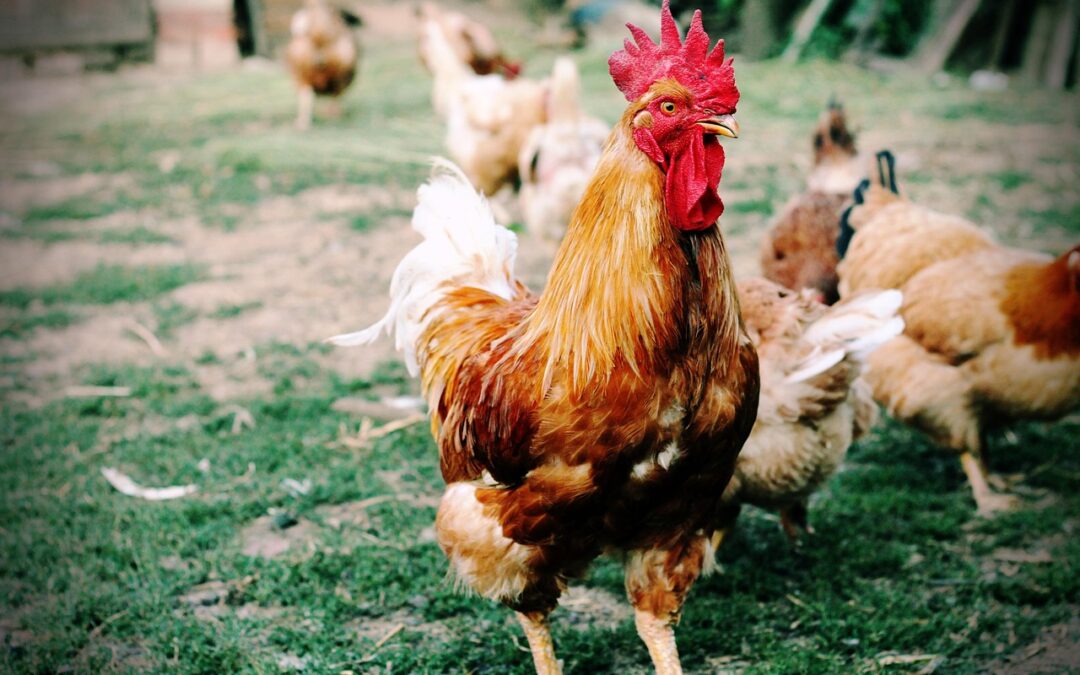A quick internet search on the nature of chickens will show the consensus that chickens are, in fact, chicken. They are nervous little birds, running from everything they see and hear! Nervous birds can develop odd behavior and low egg production.
Over the last several years, we’ve worked with a variety of breeds and employed a variety of rearing and keeping styles. We decided on Rhode Island Reds because of their excellent tolerance to extreme cold and heat, their high and consistent production of beautiful brown and speckled eggs, and their overall pleasant disposition. Other than that, though, there are several techniques that we’ve learned have resulted in calm, productive chickens.
1. Make a decision on your tending schedule, and stick with it. Chickens, being naturally nervous, love consistency. It soothes them. It brings predictability to their lives, and a way for them to structure their own activities. They will develop their own routine around their feeding schedule and get accustomed to their eggs getting removed from the nesting boxes at particular times. When they were young, we chose a time to check on them every day that would work for us regardless of whether it is winter or summer, and we stick with it. If we don’t, they will express their disdain by giving a quick peck when we show up late – or even break an egg shell or two!
2. Make sure they feel protected. Birds who are under constant nightly threat of predators, or whose coops are situated in areas with erratic activity and noise levels will be more likely to be stressed. We have multiple flocks that live separate from each other, but in the same vicinity. The hens that have a rooster living with them are calmer, because they feel safer. Understand that not all roosters are the same or have a good disposition! We have had roosters that became aggressive once they hit puberty and never settled down – and those hens were certainly stressed. The roosters we have now take excellent care of their ladies and even will let us pick them up whenever necessary.
Because we have a lot of predators in our area, safety is a big concern. We moved our birds very close to our house where they are less likely to be attacked. We trained our Australian Shepherds to guard them at night. It took the pups about two years to firmly establish a boundary around our cabin and yard birds, staying up night after night and sleeping during the day, chasing foxes and raccoons back to their dens. Now, the pups can rest at night and rely on that which they worked hard to establish. But if someone tries to breach that boundary – those pups will go running through the night!
3. They like to have something to do. Part of the reason that we have a mid-morning feed schedule is because we observed that, when the chickens get up each day, they have things to do. They are busy pecking around to see what happened in the yard overnight, catching the morning dew or investigating a new puddle, stretching their voices and wings. Once they get done with all of that, they want to see us and be tended.

Chicken Snacks
An interesting development from our pups doing such a good job defending our chickens is that the roosters have no urgent job. Each rooster ensures that the hens eat tablescraps before he does. But, other than that, there is not really much for them to do. Instead, those roosters bait the pups into little arguments. The roosters get to puff up their feathers and strut back and forth, while the pups get enticed into a wild frenzy. It is quite the scene!
4. They need balanced nutrition. There are a few different ways that our chickens have stayed consistently healthy and strong. Here is what we do:
a. Water. Obviously, fresh water is a given requirement. On sweltering summer days, we increase our visual checks to ensure that they are still well-supplied.
b. Access to grass. Because of the predators in our area, our chickens live in chicken tractors. This provides them with an elevated chicken coop with a nesting area, an inside room to stay out of the weather when desired, and plenty of access to fresh grass, dirt, and bugs. Chicken tractors have wheels attached so that they may be moved regularly to keep the chickens having constant access to new, clean areas to explore.
c. Quality feed. Having access to quality layer feed ensures that the chickens will have consistent nutrition on days when they can’t gather enough protein from bugs and worms in the dirt where they are pecking. There are a lot of kinds of chicken feed. Do your research and find a feed that suits your family’s budget and your chickens’ nutritional needs.
d. Scraps. Part of our routine is giving our chickens some table scraps to explore. This keeps their minds engaged, gives them some physical activity to engage in, and provides a variety of nutrients that is good for their diets. There is a lot of commentary on what scraps are appropriate. For example, we always steer clear of onions because it affects the taste of the eggs. Here is the container of scraps that we started today: tortillas, shrimp tails, strawberry calyx, and a bit of bread – yum!

